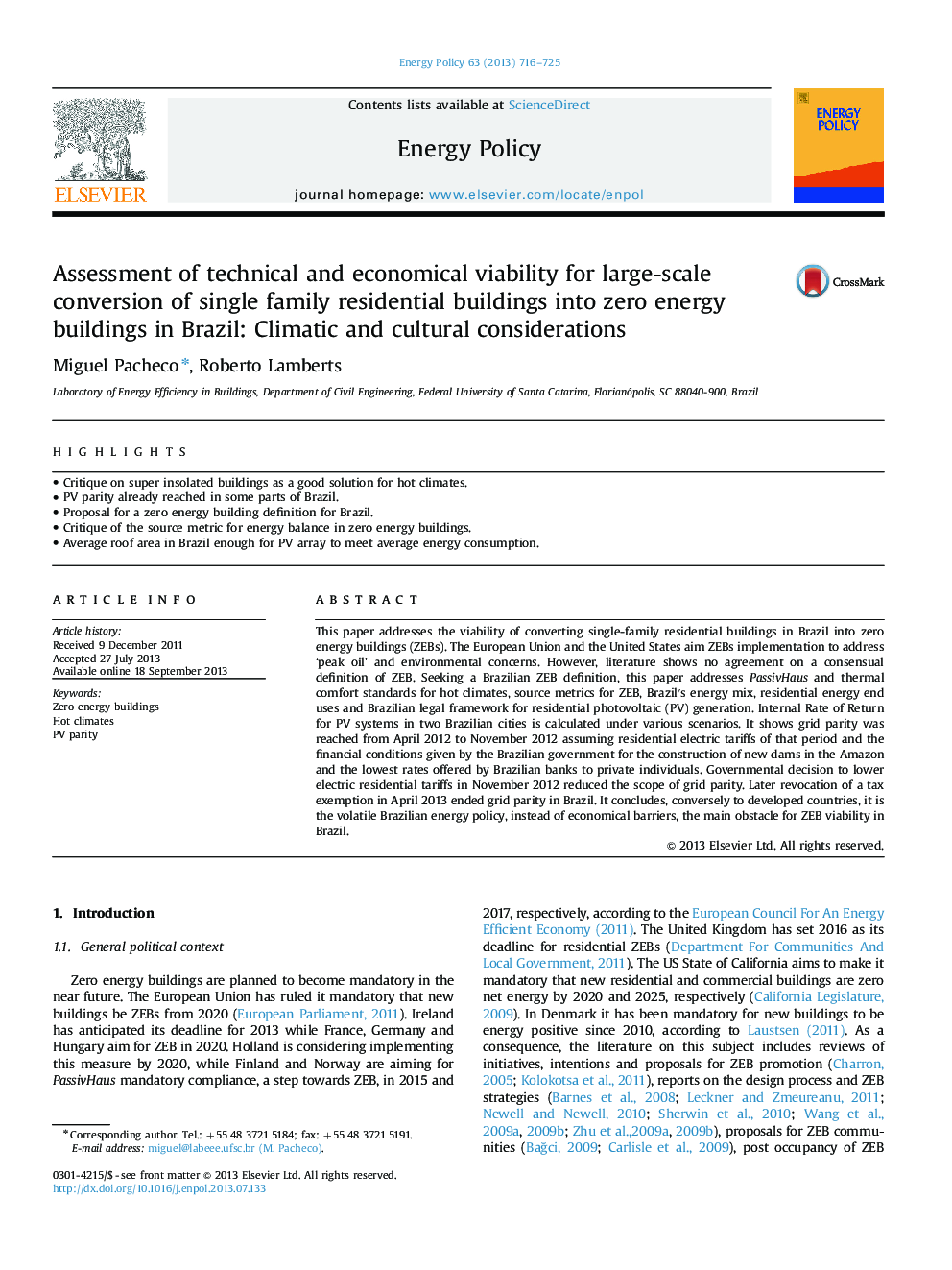| Article ID | Journal | Published Year | Pages | File Type |
|---|---|---|---|---|
| 7403806 | Energy Policy | 2013 | 10 Pages |
Abstract
This paper addresses the viability of converting single-family residential buildings in Brazil into zero energy buildings (ZEBs). The European Union and the United States aim ZEBs implementation to address 'peak oil' and environmental concerns. However, literature shows no agreement on a consensual definition of ZEB. Seeking a Brazilian ZEB definition, this paper addresses PassivHaus and thermal comfort standards for hot climates, source metrics for ZEB, Brazilâ²s energy mix, residential energy end uses and Brazilian legal framework for residential photovoltaic (PV) generation. Internal Rate of Return for PV systems in two Brazilian cities is calculated under various scenarios. It shows grid parity was reached from April 2012 to November 2012 assuming residential electric tariffs of that period and the financial conditions given by the Brazilian government for the construction of new dams in the Amazon and the lowest rates offered by Brazilian banks to private individuals. Governmental decision to lower electric residential tariffs in November 2012 reduced the scope of grid parity. Later revocation of a tax exemption in April 2013 ended grid parity in Brazil. It concludes, conversely to developed countries, it is the volatile Brazilian energy policy, instead of economical barriers, the main obstacle for ZEB viability in Brazil.
Keywords
Related Topics
Physical Sciences and Engineering
Energy
Energy Engineering and Power Technology
Authors
Miguel Pacheco, Roberto Lamberts,
